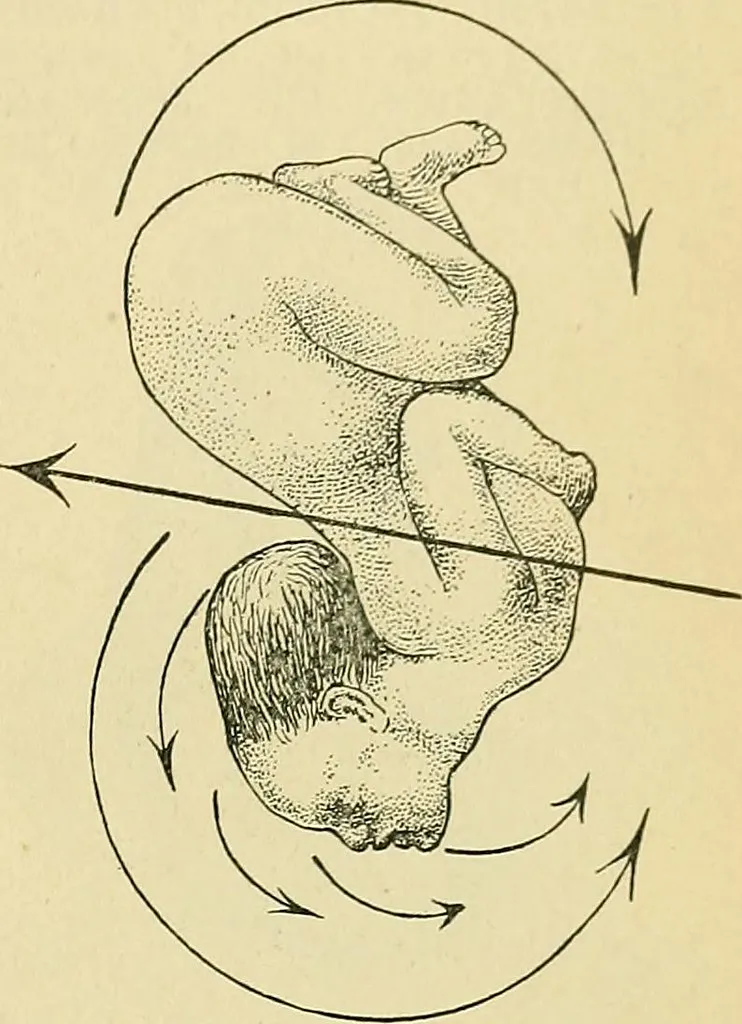The first time my wife went into labor, she was so sure at that point that she wouldn't get pregnant anymore, I was so scared it was painful for her, but with everything she said during the first labor, oh we have two kids now (lol), but women go through a lot in that labor room and every time it's so scary what goes down in there, women are really strong, and I give it to them. A lot of things could go wrong before, during, or after childbirth and that is why in today's post, I will be writing on prolonged labor.
Labor is an intense series of constant muscle contractions, when women have these contractions, it helps to push the baby out of the uterus into the birth canal. The contraction could be felt in the lower back region or the belly region, these are labor pains, the purpose of the contractions is to help dilate the opening to the vagina, which gives room for the baby to move out of the body and be born. The first time, moms usually experience labor for around 12-18 hours, but after the first labor, labor experience occurs usually more quickly than the first time(but that is, speaking on a normal term).

Image source
Prolonged labor, is one of the abnormal procedures of labor, it is also known as failure to progress, it happens when labor lasts for about 20 hours for first-time mothers, and 14 hours in women who have previously had children. Prolonged labor during the active phase of childbirth can give room for serious concern. Prolonged labor could happen if;
The baby is extremely large.
There is a weak contraction.
Slow effacement of the cervix.
The baby is in an abnormal position.
The baby is extremely big and is unable to move through the birth canal.
The baby's head is extremely large.
Small size of the pelvis.
Carrying multiples.
Psychological problems like stress, worry, and fear have also been found to cause prolonged labor.
The birth canal is not big enough for the baby to move through.
Prolonged labor can happen at any stage of labor.
The stages of labor are in 3 phases, we have;
- Latent phase.
- Active phase.
- Transition phase.
Some of the times when the contractions don't get strong enough to fully dilate your cervix and this happens when the cervix does not dilate at about 1cm every hour and when labor stops completely. At this point, the doctor might speak with you about the available option to help you get through the delivery process, the woman in labor may also make her own decision in this case.
The second labor stage is the time between full cervical dilatation which is often 10cm and the birth of the baby. This stage would usually last for 3 hours for the first baby and 2 hours if you have had a baby previously.
The third labor stage is the period between the birth of a baby and the delivery of the placenta, this process would usually lasts for about 30-60 minutes, but this is highly dependent on how this stage is managed either it is in a physiological or active pattern, this stage of labor is usually carefully supervised.
When labor appears to be going slowly, the doctor or midwife in charge would closely check for the presence of problems either with the mother or the child, to ascertain what the next procedure is going to be, the medical team would check for how often the woman in labor is having contractions as well as the strength of the contractions. These tests may be done as well;

Image source
Intrauterine Pressure Catheter Placement(IUPC): With this test, a tiny straw monitor is placed into the womb beside the baby, this will allow the medical team identifies when there is a contraction, if the team feels the contractions are not strong enough, they may choose to add pitcoin.
Continuous Electronic Fetal Monitoring(EFM), this instrument is used to measure the baby's heart rate.
Active management of labor is usually recommended to limit the occurrence of postpartum hemorrhage (bleeding after birth). The doctor would give the woman in labor, an injection of a medicine called oxytocin after the baby is born. This will make them clamp and cut the umbilical cord and gently apply traction to the cord to deliver the placenta. This procedure is completely optional as some women will insist on naturally delivering their placenta.
During the process of prolonged labor, the health expert in charge would constantly check the baby's health to determine if some concerns need to be discussed with you or close family members and other recommendations would include breaking the water of the woman in labor or giving a medicine called oxytocin, this would speed up contractions and provide more strength. Other suggestions that would be provided to possibly help progress are;
- Pain medicine.
- Change in position.
- Moving around.
- Consistently moving and staying around.
At the point when the baby has entered into the birth canal, the doctors may suggest that the baby be delivered with the use of a vacuum cup or forceps, in a case where there is concern about the health of the baby, an emergency cesarean would be recommended.
Mothers who go through prolonged labor would have increased chances of post-partum hemorrhage and uterine infection, but not only mothers can experience the downsides of prolonged labor, it can affect even the children. A baby given birth through prolonged labor could have experienced abnormal heart rhythm, low level of oxygen, meconium in the amniotic fluid, and infection from when germs enter into the child's body.
Most cases of c-sections are performed based on the failure to progress with natural childbirth. The major goal of every treatment option applied is to; basically, speed up the labor process.
Conclusion.
Prolonged labor is a serious case that shouldn't be taken lightly, a standard medical team would handle the situation appropriately, knowing the next step to take to save the life of mother and child, it is wise to register in a standard hospital as an expectant mother.
References.
https://www.bila.ca/failure-to-progress-during-labour-and-delivery/
https://www.winchesterhospital.org/health-library/article?id=101291
https://www.webmd.com/baby/guide/prolonged-labor-causes-treatments
https://americanpregnancy.org/healthy-pregnancy/labor-and-birth/prolonged-labor/
https://www.pregnancybirthbaby.org.au/slow-progress-in-labour#risks